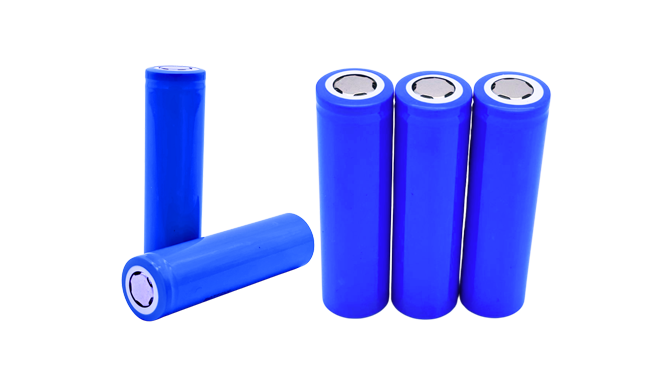Characteristics of 18650 Lithium ion Battery.
(1) High energy density
Lithium ion batteries have a higher energy density, which means that they can store more electrical energy with the same volume or weight. For example, the energy density of a common 18650 lithium-ion battery can reach around 250Wh/kg, while the energy density of a traditional nickel cadmium battery is only around 50Wh/kg. The high energy density makes lithium-ion batteries have significant advantages in portable electronic devices, electric vehicles, and other fields, which can meet the needs of devices for long endurance and high power output.

(2) Long cycle life
The cycle life of lithium-ion batteries is relatively long, generally reaching 500 to 2000 charge and discharge cycles. For example, the cycle life of lithium iron phosphate (LFP) 18650 batteries can reach 1000 to 2000 times. Long cycle life means that the battery can maintain high capacity and performance after multiple charge and discharge cycles, reducing maintenance costs and replacement frequency of equipment, especially suitable for applications such as electric vehicles and energy storage systems that require long-term stable operation.
(3) Low self discharge rate
The self discharge rate of lithium-ion batteries is relatively low, usually only 5% to 10% per month. This means that the battery can maintain a high level of power even after long-term storage, making it convenient for users to use at any time. The low self discharge rate makes lithium-ion batteries have good application prospects in backup power sources, emergency equipment, and other fields, ensuring that equipment can work normally at critical moments.
(4) No memory effect
Lithium ion batteries do not have a memory effect, and users do not need to fully discharge before charging, and can be charged at any time. This provides great convenience for users and avoids the problem of battery performance degradation caused by forgetting to discharge. The no memory effect has enabled lithium-ion batteries to be widely used in portable electronic devices, power tools, and other fields, improving device efficiency and user experience.
(5) Good environmental performance
Lithium ion batteries do not contain harmful heavy metals such as mercury, cadmium, lead, etc., making them environmentally friendly. In the process of battery production and use, lithium-ion batteries have less environmental pollution and meet the requirements of modern society for environmental protection. With the continuous improvement of environmental awareness, the application of lithium-ion batteries in various fields will become more extensive, contributing to the promotion of sustainable development.
